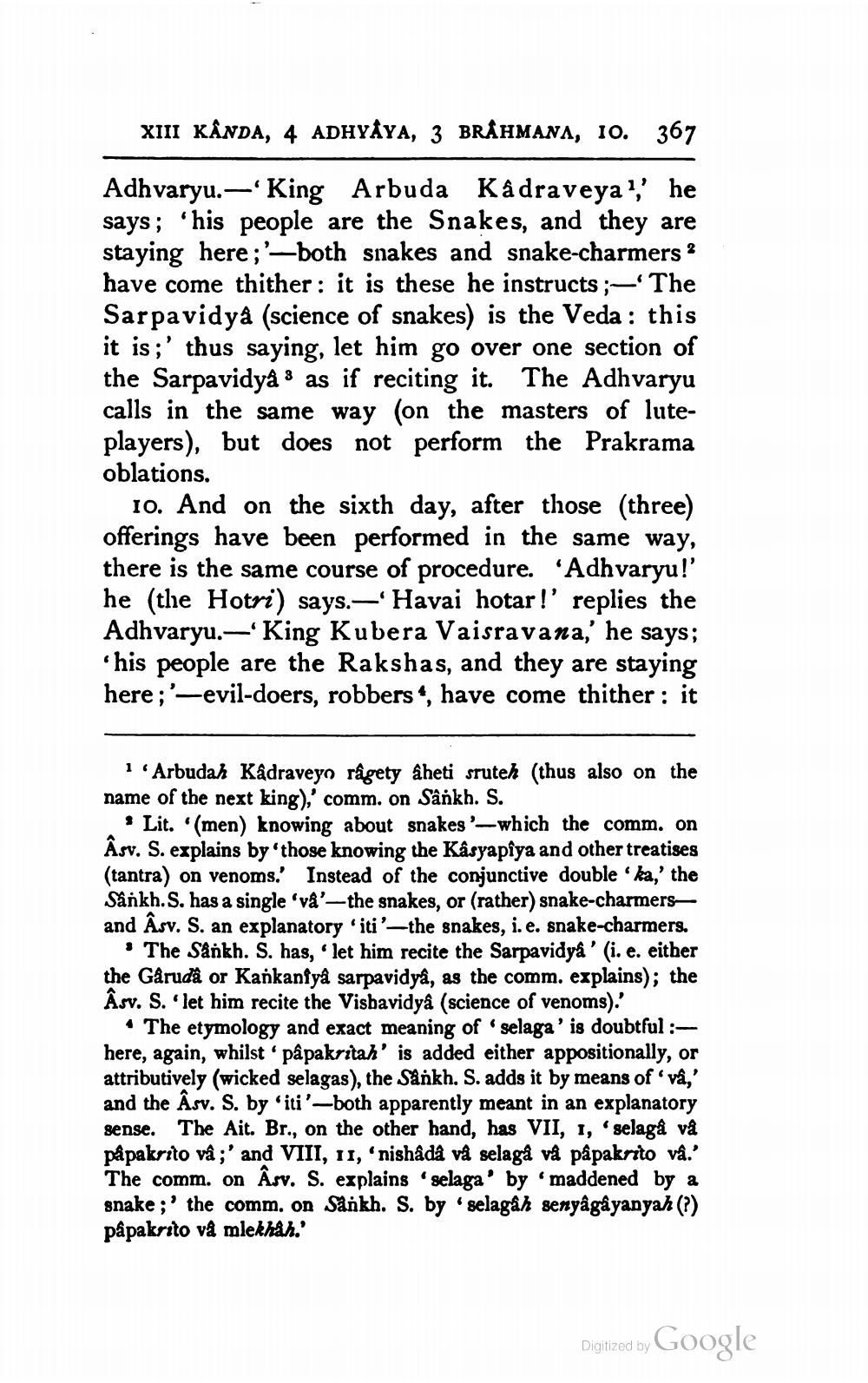________________
XIII KÂNDA, 4 ADHYAYA, 3 BRAHMANA, 10.
367
Adhvaryu.—King Arbuda Kadraveyal' he says; "his people are the Snakes, and they are staying here;'—both snakes and snake-charmers ? have come thither : it is these he instructs ;-'The Sarpavidya (science of snakes) is the Veda: this it is;' thus saying, let him go over one section of the Sarpavidya 8 as if reciting it. The Adhvaryu calls in the same way (on the masters of luteplayers), but does not perform the Prakrama oblations.
10. And on the sixth day, after those three) offerings have been performed in the same way, there is the same course of procedure. ‘Adhvaryu!' he (the Hotri) says.—Havai hotar!' replies the Adhvaryu.—King Kubera Vaisravana,' he says; his people are the Rakshas, and they are staying here;'-evil-doers, robbers “, have come thither : it
1. Arbudah Kadraveyo râgety aheti sruteh (thus also on the name of the next king),' comm. on Sânkh. S.
· Lit. '(men) knowing about snakes '-which the comm. on Âsv. S. explains by those knowing the Kâsyapiya and other treatises (tantra) on venoms.' Instead of the conjunctive double .ka,' the Sankh.S. has a single 'va'-the snakes, or (rather) snake-charmersand Âsv. S. an explanatory 'iti'—the snakes, i.e. snake-charmers.
The Sånkh. S. has, let him recite the Sarpavidya' (i. e. either the Gårudà or Kankanfyà sarpavidya, as the comm. explains); the Asv. S. let him recite the Visbavidya (science of venoms).'
• The etymology and exact meaning of selaga' is doubtful :here, again, whilst 'pâpakritah' is added either appositionally, or attributively (wicked selagas), the Sänkh. S. adds it by means of va,' and the Åsv. S. by 'iti'-both apparently meant in an explanatory sense. The Ait. Br., on the other hand, has VII, 1, selagå vå påpakrito vâ;' and VIII, 11, 'nishådå vå selagå vå påpakrito vâ.' The comm. on Åsv. S. explains selaga' by 'maddened by a snake ;' the comm. on Sänkh. S. by selagåh senyågåyanyah(?) papakito và mlesâu.”
Digitized by Google




